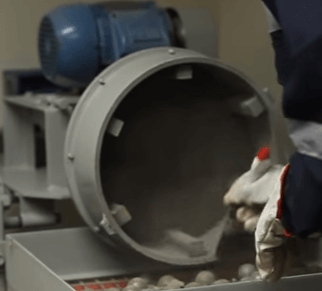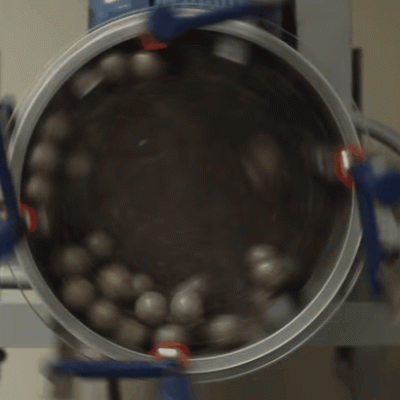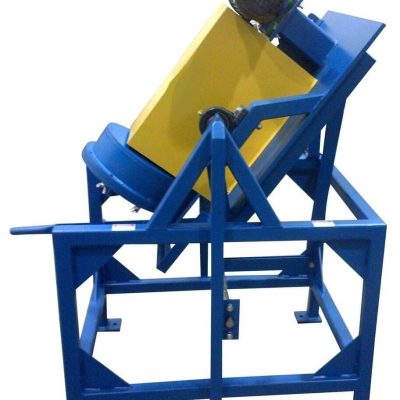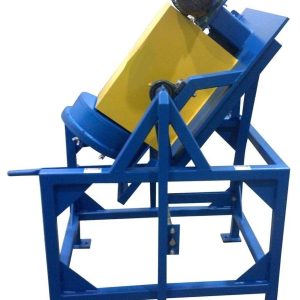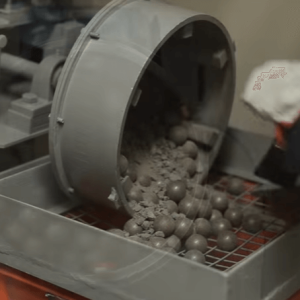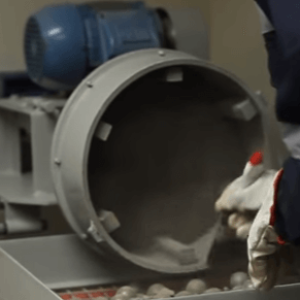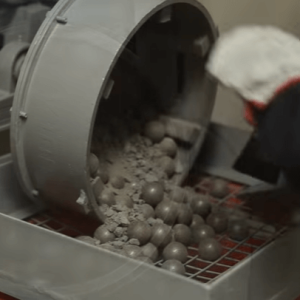A small laboratory SAG mill sized to your specifications for in-house Semi-Autogenous Grindability / Comminution testing.
The design shown here (customisable) is 12” x 4” with welded in 1” lifter bars.
A typical Batch SAG Mill, 12” diameter X 4” long, mild steel construction complete with one removable head, welded in lifters, rubber lined, 1 HP motor/gear reducer drive, support frame which allows the mill to tilt for loading and discharging (manual operation), receiving pan, and variable speed drive.




